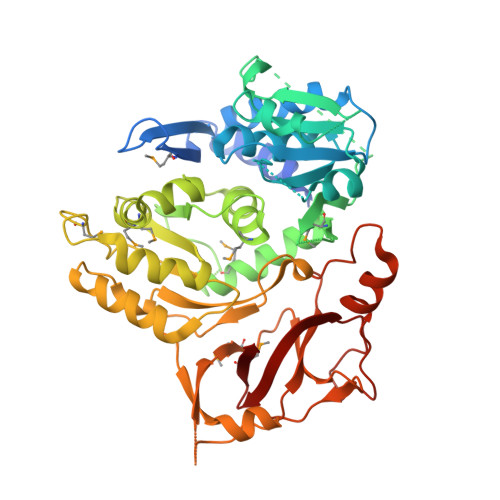Mechanistic and functional insights into fatty acid activation in Mycobacterium tuberculosis.
Arora, P., Goyal, A., Natarajan, V.T., Rajakumara, E., Verma, P., Gupta, R., Yousuf, M., Trivedi, O.A., Mohanty, D., Tyagi, A., Sankaranarayanan, R., Gokhale, R.S.(2009) Nat Chem Biol 5: 166-173
- PubMed: 19182784
- DOI: https://doi.org/10.1038/nchembio.143
- Primary Citation of Related Structures:
3E53 - PubMed Abstract:
The recent discovery of fatty acyl-AMP ligases (FAALs) in Mycobacterium tuberculosis (Mtb) provided a new perspective of fatty acid activation. These proteins convert fatty acids to the corresponding adenylates, which are intermediates of acyl-CoA-synthesizing fatty acyl-CoA ligases (FACLs). Presently, it is not evident how obligate pathogens such as Mtb have evolved such new themes of functional versatility and whether the activation of fatty acids to acyladenylates could indeed be a general mechanism. Here, based on elucidation of the first structure of an FAAL protein and by generating loss-of-function and gain-of-function mutants that interconvert FAAL and FACL activities, we demonstrate that an insertion motif dictates formation of acyladenylate. Because FAALs in Mtb are crucial nodes in the biosynthetic network of virulent lipids, inhibitors directed against these proteins provide a unique multipronged approach to simultaneously disrupting several pathways.
Organizational Affiliation:
National Institute of Immunology, Aruna Asaf Ali Marg, New Delhi 110 067, India.















